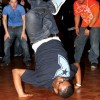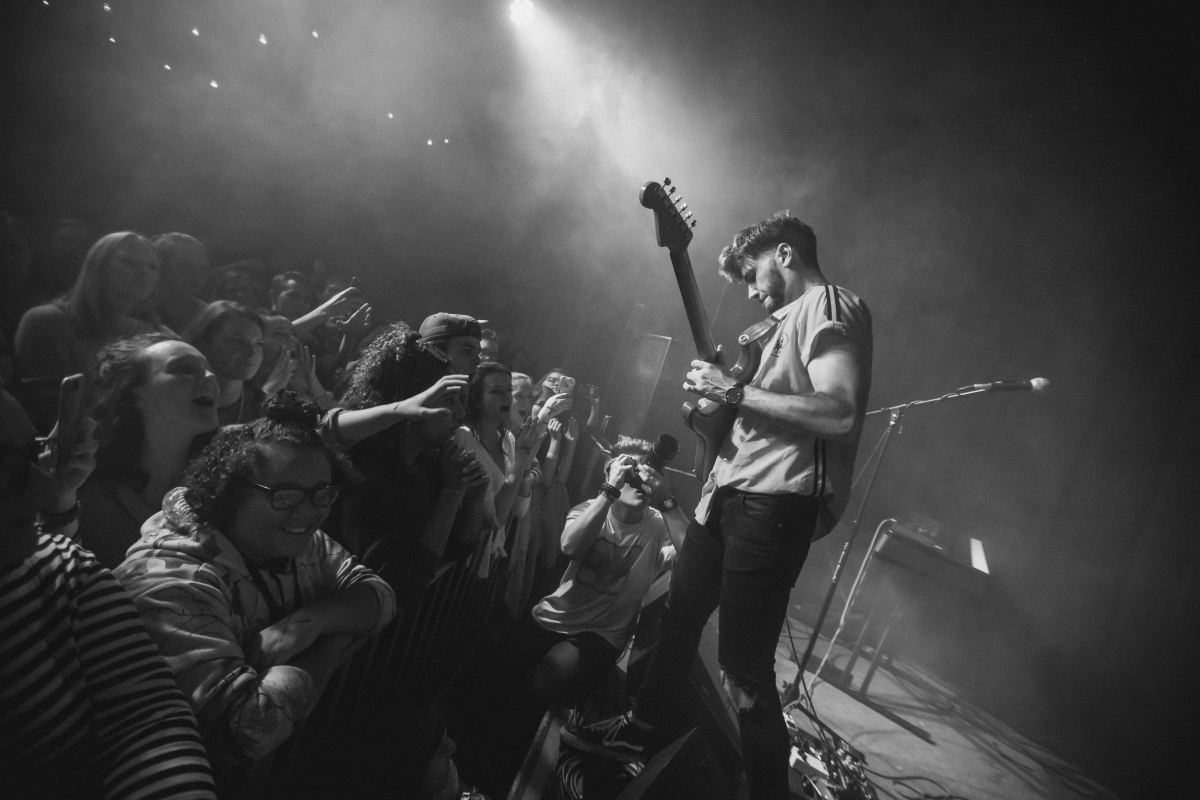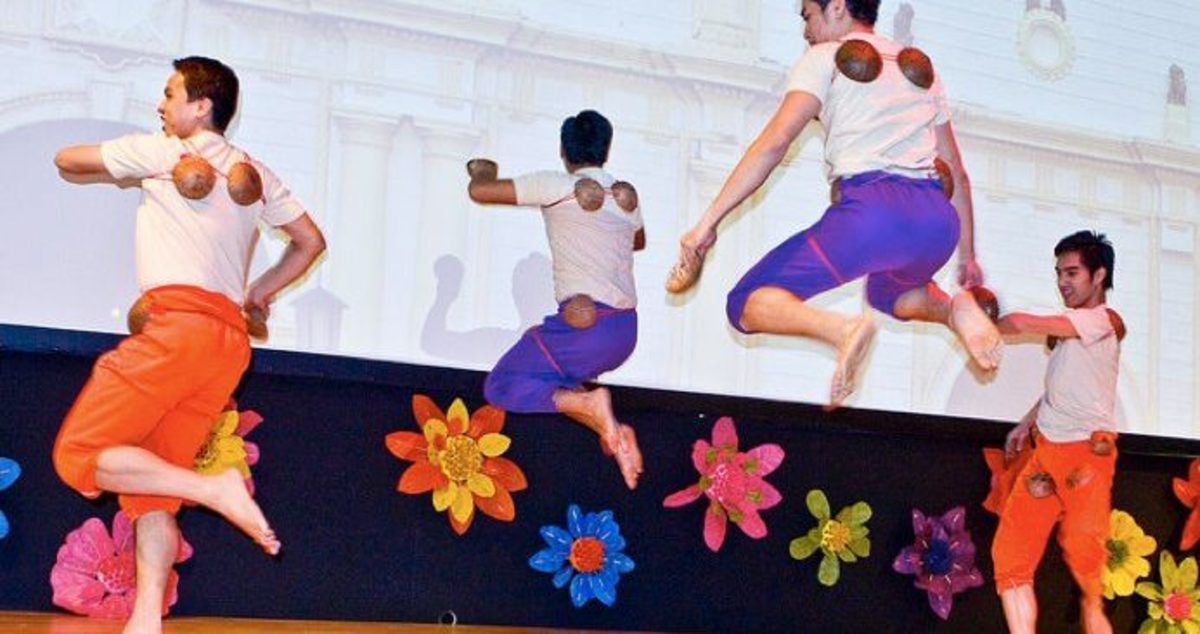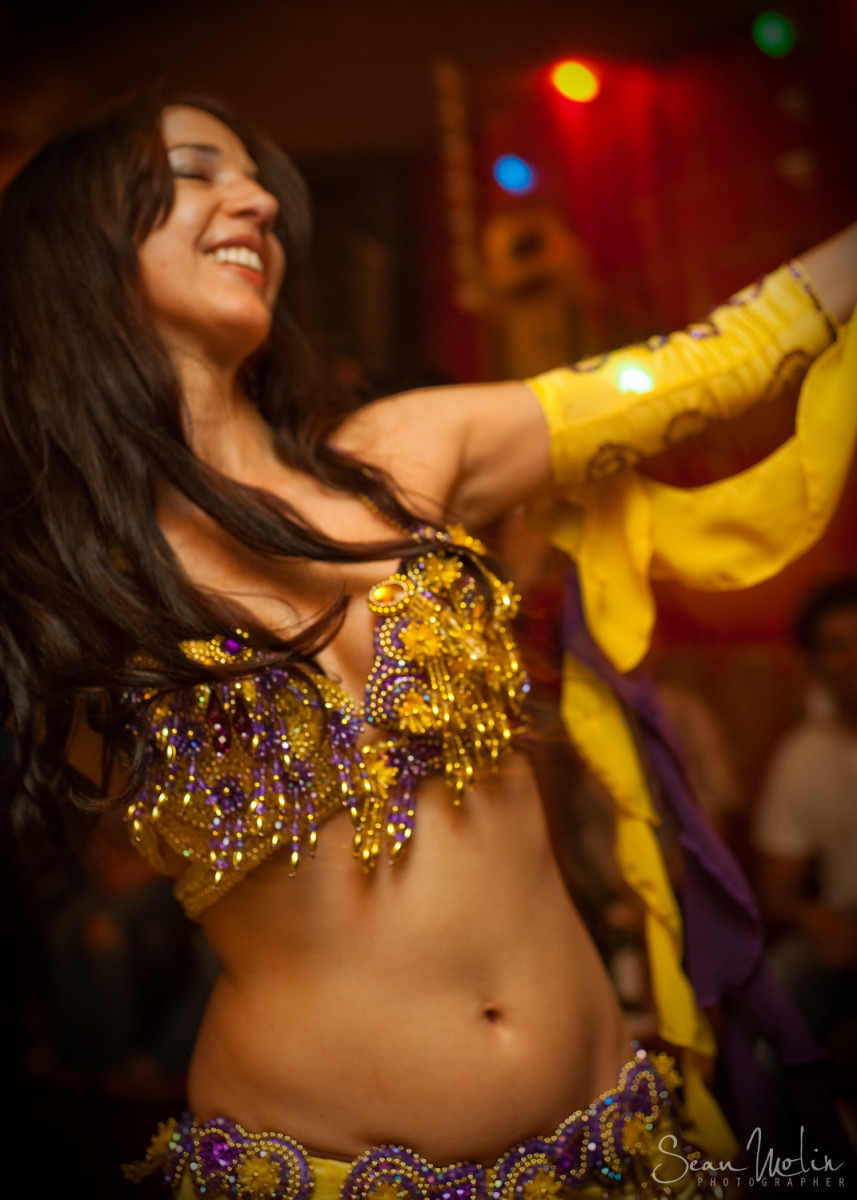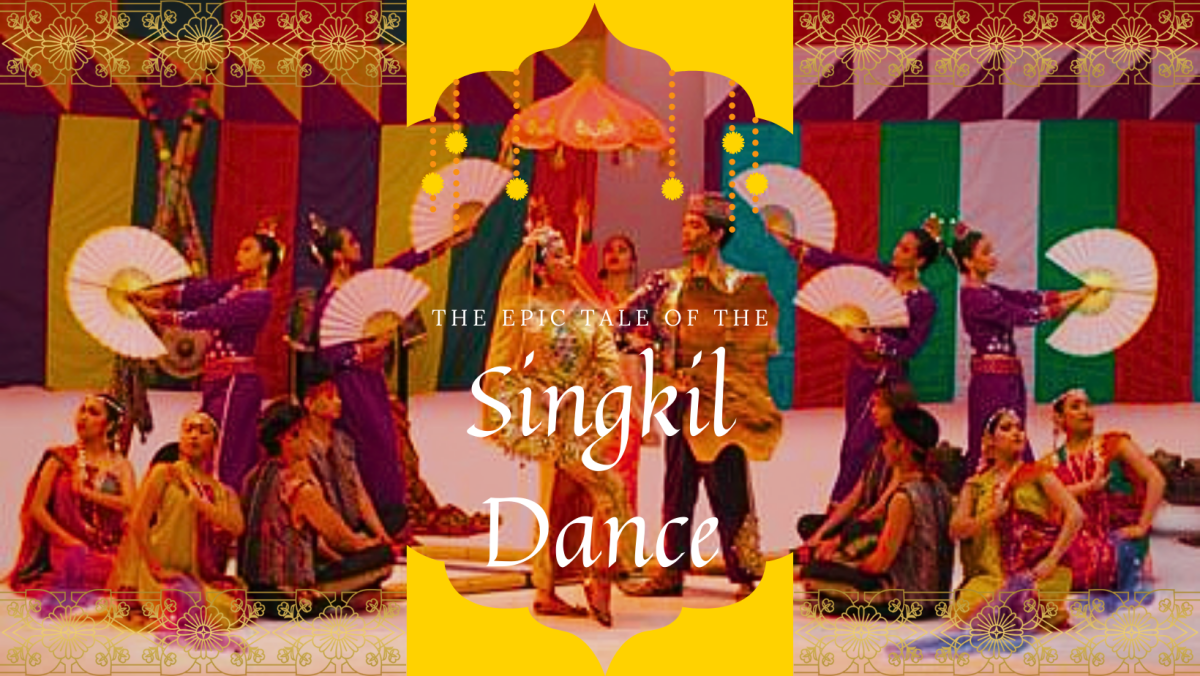The Art of B-boying
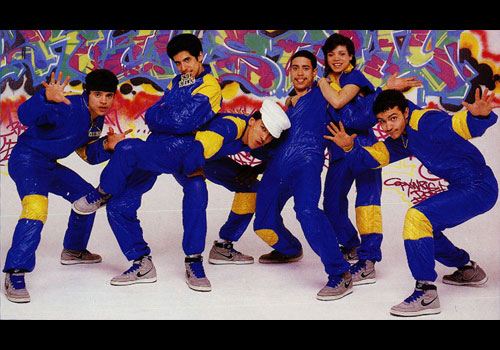
B-boying Origins
First of all, I am NOT a historian and this is NOT complete. However, I wanted to give a BASIC background of B-boying from the 70s until today from my own knowledge (I've been b-boying for over 10 years now). I can honestly write 10 pages as there is A LOT more information and history to divulge, but I will give you as brief history as I possibly can to help you reach some general knowledge about breaking. Thanks =). I will have a link posted where you can get pretty complete knowledge and ORIGINAL sources at the end of this hub.
*i may also keep updating to make this more complete in the future
Origins - The Birth, The Cause, The Music, and African American influence
B-boying, Breaking, or Break dancing (as known to mainstream media) is a dance that came out of the 70s block parties in the South Bronx of New York. It's a very unique dance that takes from other dances, martial arts, cultures, and reinvents itself as well as creates its own movements. A few of the major crews back in those days were the N-word twins, Crazy Commandos, SalSoul, Zulu Kings amongst others. The actual 'break' word was a street term back in the day that meant to go berserk. You know how people say "she went postal"? Well, it's the same kind of concept. It just so happened that the most frenetic point of the song was called the break. Some of the most popular songs even until this day for b-boys and b-girls include: "Sex Machine", "Funky Drummer", "Apache", "It's Just Begun", and other songs that had a really funky/rock/soul/drum driven type of sound. A Jamaican DJ by the name of Clive Campbell aka DJ Kool Herc was responsible for learning how to extend the break into a 10 minute segment by using two of the same records on the turntable. He would switch back and forth by using the cross fader to go from the left and right turntable. People could go off (get loose) to their favorite part of the record. It just so happened that these guys and girls that really started to develop the movement and break to these breaks were called b-boys and b-girls. Other DJs such as Grand Wizard Theodore (inventor of scratching) and Grandmaster Flash, a dj that invented cutting and the backspin, really were progressive with taking the break and manipulating the sounds. An ex leader of a gang called the Black Spades, Afrika Bambaataa, was one of the first to really bring all of this together in a unified cultural setting. He too is a DJ, Producer, and Emcee. He had a group he started called the Zulu Kingz (which were a group of people from the hard life as well as talented people) that were extraordinary b-boys. In the music world, he was the leader of a Hip-Hop group called the Soul Sonic Force. You may have heard the track, "Planet Rock".
Mid to late 70s - Puerto Ricans, dynamics
In the mid to late 70s, you saw a lot of Puerto Rican kids develop a different style of b-boying that expanded far beyond the foundation at the time. What they called the "Moreno style" aka African American style from the early 70s development was really based on being sporadic: a lot of quick sweep, quick steps, a lot of funk, flavor, and dancing on top or toprock - a freestyle dance done before going down to the floor. The Puerto Ricans brought out the element of surprise, they brought the hunger, the battle tactics, and the dynamics to the dance. Guys like Trac 2 really started to make this dance a lot more dynamic by bringing in moves like 1990s, based off the pirouette in gymnastics. A group called Rock Steady Crew really started to come in the forefront by guys such as JoJo and Jimmy Dee. They inspired a young cat by the name of Crazy Legs. Crazy Legs is a well known name in today's scene having over 30+ years of experience as b-boy and still getting down. Towards the late 70s, b-boying in the immediate New York scene started to get played out and made room for dances like the Robot, Popping, etc. The popularity of shows like Soul Train and the music leaning more to disco really changed the way people were thinking of dancing. No more was everyone thinking of doing a cool dance in the middle of circle. It was time for partner dancing.
80s - Exploitation and Expansion
In the 80s, the dance started to get really popular. It was no longer just a New York thing or just a Bronx, Harlem, Queens, or Brooklyn type of dance. No. With movies such as Wild Style and documentaries such as Style Wars, this dance started to become known. Mainstream media were looking for ways to capture the craze. With the help of Rock Steady Crew (Devious Doze, Ken Swift, Baby Love, Mr. Freeze, Kuriaki, Buck 4), Magnificent Force (featuring Mr. Wiggles and Pop Master Fabel), New York City Breakers (Kid Nice, Icy Ice, Action, Powerful Pexter, Lil Lep, Mr. Wave, and others - the dance grew in major popularity. So a lot of movies such as Flash Dance, Breakin', Breakin' 2, and Beat Street really started to capitalize off the dance. It was going through an exploitation period. Pretty soon you saw guys doing headspins and windmills in a KFC or Taco Bell commercial like it was nothing. They took away a lot of the heritage of the dance focused a lot on the dynamics, the eye candy.
Also in the 80s, you saw a lot more variations of stuff. Moves such as Halos, Airtracks, Flares, and even combinations of moves became well known. California was a hot bed for the dynamic stuff because that's all they really saw in the movies. As you know, California was always hip to some of the latest dances such as the Robot, Campbellocking bka Locking, and Popping. They really took the dynamics of air moves and power moves to a whole other level. They were really inspired by the New York City Breakers who put the speed and stronger power style in play. A crew like Rock Steady Crew focused more on the character, the finesse, the style, and flavor of the dance.
They were even working to get a dance like B-boying as an official sport of the Olympics. New York City Breakers performed at the opening Olympic ceremony in 1984 for former President Ronald Reagan. Along with that there were constant Beat Street tours and tours from the Zulu Nation that helped really spread the word and the dance out all over the place. With all of that being said, it really became played out in the United States by the mid 80s in place of other crazes like BMX.
This caused some of the famous b-boys that had tough lives prior to go back to the not so positive things they happened to do before they were able to make money off their talent. In fact, a lot of the same clubs that let these crews perform and get in for free didn't even acknowledge them when it was played out.
90s - The Resurgence
By the early 90s, things started to pick up again. Why? Well, the world that got into the dance late really meshed to the dance and the whole culture. The Hip-Hop scene in the United States really became just a rapper and producer thing (not even the DJ mattered anymore). In places like Asia and Europe especially the dance became a very key element. Battle of the Year was a great event in Europe that not only had a battle but a showcase of choreography whether it was Popping, House, Locking, or B-boying. When European events started to get really popular and events started to pick up the states, it began a resurgence. There were a lot more crews out there and different flavors. The influence from all parts of the world started to really get into the dance and it became A LOT more complex!
Now you saw events like the Rock Steady Crew anniversary (which is July 27-29th this year of 2012) which really helped the B-boying scene out greatly. Even weekly you would see the mainstream dances of the day mixed in with people that still do some b-boying. More events started to happen around the globe and this time it was spread in a much more organic way with a better history of the dance.
2000s
B-boying began it's exploitation again but in a much better way. Artists like Missy Elliott reverted back to the 80s style and put more b-boys and b-girls in the video. Steffan Clemente bka Mr. Wiggles was in Missy Elliott's "Work It" video and his move, Wiggles Walk, became a staple. It was even featured as a challenge in the popular MTV show, "America's Best Dance Crew". Events such as Battle of the Year, Freestyle Session, Who Can Roast the Most, Pro-Am, Evolution, R-16, UK Champs, Red Bull BC One really brought the competition to a very high level. B-boys could really start competing for 2,000 to even $20,000 in one event. A show called "Dance Fever" started on ABC Family in the summer of 2003. It could be considered to be a precursor to the now widely viewed show on Fox, "So You Think You Can Dance". A guy named B-boy Crumbs was the staple b-boy of "Dance Fever". He and other b-boys were featured in what started the dance movie craze called "You Got Served". A movie that featured popular boy band at the time, B2K.
The dance in the late 90s to the early 2000s focused a lot on originality, blowups (big, explosive move combinations), and power. 2001 was actually the time I started so I got the last few major hints of originality. More movies in the late 2000s such as Step Up really capitalized off the craze. The B-boy scene started to change itself. There are a lot of people now focusing on rocking beats (dancing to the beat) and doing more foundation, which is good. However, the originality is lacking and everyone is almost looking the same. Sites like YouTube and other media can possibly be to blame because of the easy access. 10 to 20 years ago, you had the occasional tape or dvd that you had to wait months to watch other footage. You mainly had you, your crew, and your immediate dance scene to really get ideas and build your own array of moves.
The one good thing about Today's scene compared to years ago. There is a lot more unity, there are people from different cultures doing it, more b-boys are able to make more of a stable living off of this culture. Even though this article is over 1600 words, there is still a lot more to talk about. To stay constantly updated you can go to different forums like Bboyworld and Freestyle Session. You can even go to different pages on YouTube such as Strife TV to look at what the dance is about now. If you really want to get some AUTHENTIC b-boy history. Please go to Mr Wiggles' website for complete street dance knowledge!
